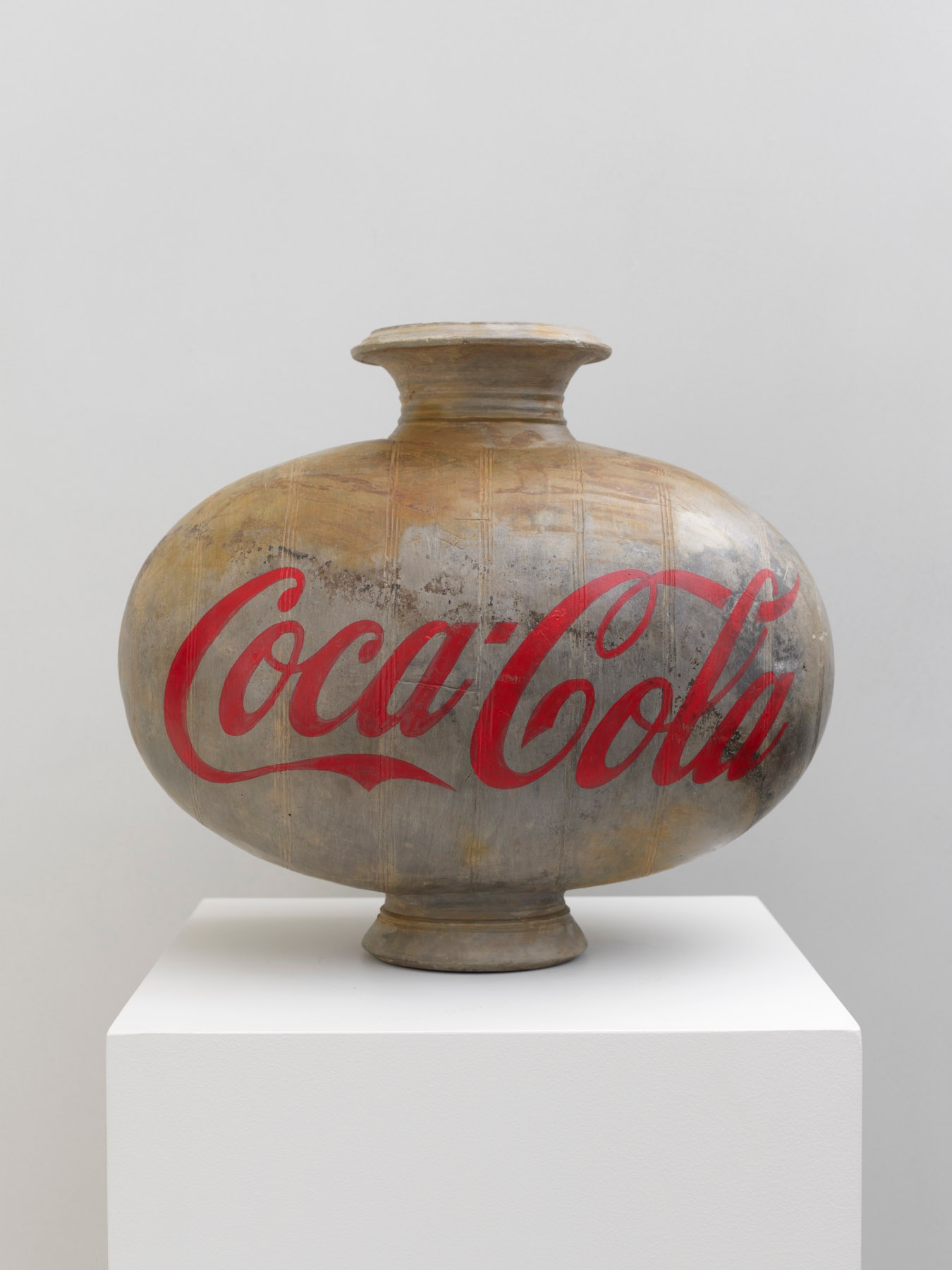Ai Weiwei

Parallels are often drawn between Ai’s aesthetic preoccupations and those of Andy Warhol, both artists drawn to globalism’s images and the objects of mass consumerism. Their similarities, some suggest, extend beyond Coca Cola’s logo and production-line studios. “Like Warhol,” critic Andre Jacobs writes, “Ai surrounds himself with stray cats, has a fondness for neon-tinted floral arrangements and takes pleasure in subverting hallowed cultural touchstones.” Ai, however, extends Warhol’s project towards political ends. Painting the brash red logo onto Han Dynasty vases, he offers reflections on the old and new, the East and West, communism and capitalism.
b.1957, Beijing
As both iconoclast and maker of images, Ai Weiwei is a figure of no easy definition. He is at once an activist, dissident, prolific writer, filmmaker, architectural designer, artist, and part-time enemy of the state. In discrete artworks, installations and performances, Ai distils elegant expressions of his political convictions told with a lyrical bent. He more often uses classical Chinese objects as ‘cultural readymades’ in his material meditations on contemporary China. Among his most well-known works is Dropping a Han Dynasty Urn (1995), a performance described in three photographs. Like many of his gestures, it was a simple yet provocative statement. Beyond its initial shock value, it offered nuanced reflections on the inheritance of the past, the place of artefacts in China following the Cultural Revolution, and the symbolism of history in a country driven by forward progress. “We can only build a new world,” the artist says, quoting Chairman Mao, “if we destroy the old one.” Working across diverse mediums – from found objects to photography, performance and film – few of Ai’s works share an aesthetic likeness. Yet all share a conceptual clarity and political urgency, a complexity that belies their material simplicity. The centre cannot hold, the artist suggests, not in China’s authoritarian regime, nor in a world driven by capital at the cost of human life.
